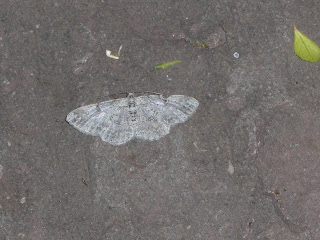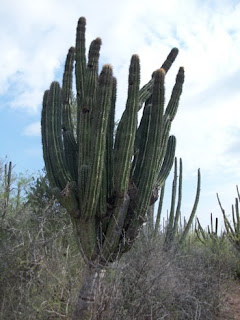After a day of trial and tribulation, we started fresh at a new research site near Posada Tacubaya.
In our gorgeous and lush new environment, we set about to putting up our experimental rig for the hummingbirds. Our resident tree-climbing expert, Beth, lended her expertise to tying off a line to hang our feeders from.
Helen tied a few knots...
And Nick gave us a hand in reinforcing the tree. (No trees were harmed in the set-up of this project)
Meanwhile, I continued to photo-document the process.
Our test for hummingbird feeder height preference concluded that hummingbirds will prefer to visit feeders at higher places than lower ones, though in the absence of higher sources of food, beggers can't be choosers. We also discovered that a 4:1 sugar-to-water ratio is the most ideal to use for attracting hummingbirds (as well as bees). We had a great time out here with our project and look forward to the day when we become legitimate field researchers and educators, setting out on a new adventure. (Maybe even together?)
Today happens to be Mexico's bicentennial celebration of their independence, as well was the centennial of their revolution. So, I hope my fellow travel mates won't mind that I make some closing remarks on the trip in the same breath as my congratulations...
We arrived safe and sound back in San Diego at 1:00PM on Sunday. Saying goodbye to new friends was difficult, but given the nature of our shared major and interests, I'm sure we'll be seeing each other again very soon... well. We'll have to be seeing each other again soon-- there is still a research paper to be written by each student for full completion of this field course, so I look forward to seeing everyone again in the process. :-)
This trip helped us grow and learn, both as researchers and as citizens of a global community. Our tiny town of Los Alamos was a wonderful home for 8 days and we all enjoyed every minute of it. The food, the culture, and the immense ecological opportunities that we were presented with were a once-in-a-lifetime chance for college students. I'm confident that there will be at least a few of us who will continue in this manner of research later on and go on to explore new areas and new studies. Myself, I plan to go into education and spread the word on how simple it can be to reduce our negative anthropogenic impacts on the environment. And why not, if only to help preserve a place as gorgeous and diverse as the Sonoran Desert?
I think it is safe to say that this trip satisfied us beyond our expectations-- to be placed in a area where so much diversity exists is the true application of everything we have learned in our classrooms. We learned to analyze, to speculate, to express our wonderment and to appreciate what nature has to offer us. Who ever could have thought that so many creatures could live in such a harsh environment as a desert, or that a lush, green forest full of life and color would be so near the very same dry, arid conditions?
Thank you to all of the amazing people who helped make this trip possible-- Dr. Teri Markow, Dr. Steve Hubbel, Dr. Patty Gowaty, Dr. Edward Pfeiler, Dr. Maxi Polihrohanakis, Joel Schumacher, Jen and Dave MacKay of El Pedregal... and of course, the lovely staff of Posada Tacubaya.
México, tienes nuestros corazones. ¡Adiós! (And Happy 200th Anniversary!)
-AN









































